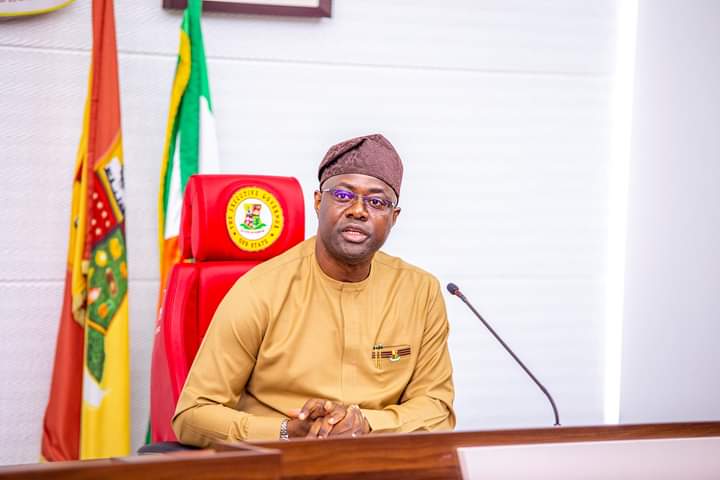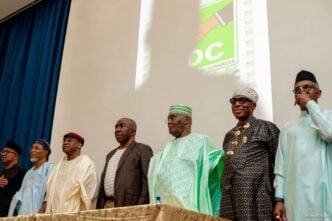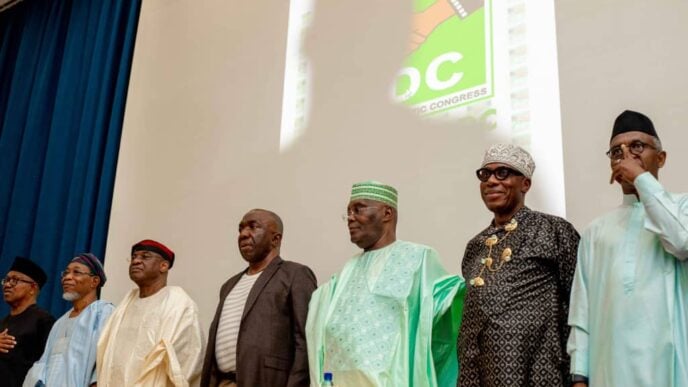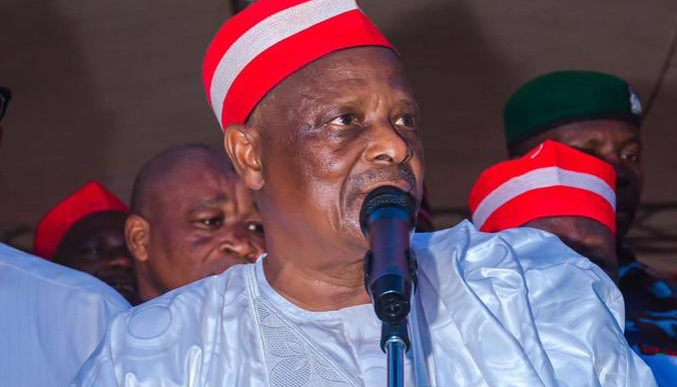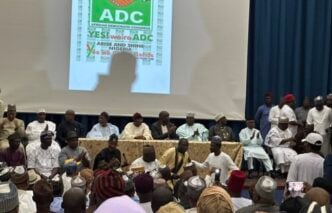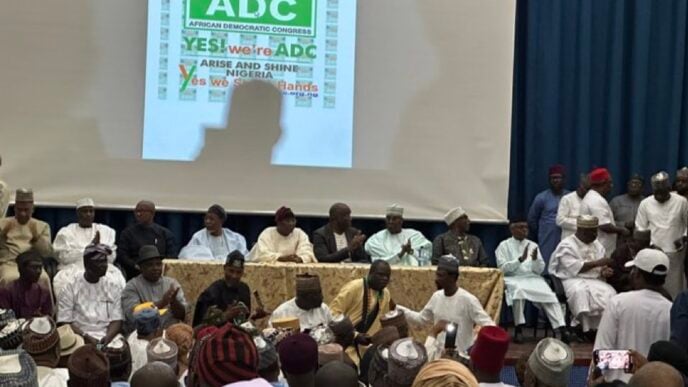BY M.A ILIASU
Public procurement in Nigeria, a vital lever for economic development, is in urgent need of reform. The system, marred by inefficiency, opacity, and entrenched corruption, has become a drain on national resources and a threat to public trust. Between 2018 and 2020 alone, Nigeria lost an estimated ₦2.9 trillion to procurement and contract fraud—resources that could have funded the construction of thousands of kilometres of roads or hundreds of public institutions. The auditor-general’s 2023 report revealed a further ₦197 billion in procurement-related irregularities, underscoring the scale and persistence of the problem. These losses are not merely numerical; they represent failed infrastructure, inaccessible health systems, and derailed development. At the heart of the problem lies Nigeria’s largely manual procurement framework, riddled with over-invoicing, non-competitive bidding, weak regulatory oversight, and widespread political interference.
In stark contrast, Kenya has embraced a digital transformation through the nationwide rollout of its Electronic Government Procurement (e-GP) system, which became fully operational in July 2025. The initiative, launched under President William Ruto’s Digital Superhighway Agenda, was designed to curb public sector procurement fraud and boost efficiency. Kenya’s e-GP system is now saving the country an estimated KES 85.9 billion annually, or roughly 0.9 percent of GDP, by automating procurement processes and embedding transparency into every stage—from planning to payment. Unlike Nigeria’s paper-based methods, Kenya’s e-GP platform centralises all government procurement activities under one digital roof. The platform is integrated with other state systems such as the Kenya Revenue Authority’s iTax and the Integrated Financial Management Information System (IFMIS), which enhances traceability and ensures seamless compliance.
A defining feature of Kenya’s reform has been its commitment to transparency through the adoption of the Open Contracting Data Standard (OCDS). This ensures that the public has access to procurement data, including planning documents, tender information, bid submissions, and final awards. This level of openness not only curtails rent-seeking and influence peddling but also invites public scrutiny, thus strengthening institutional integrity. Additionally, the e-GP system is designed to support Kenya’s Access to Government Procurement Opportunities (AGPO) policy, which reserves portions of contracts for youth, women, and persons with disabilities. This has had a redistributive effect, helping to counter entrenched elite capture—a challenge that continues to haunt Nigeria’s procurement system.
Advertisement
The efficiency gains of Kenya’s approach are also significant. A 2024 empirical study found that the digitisation of procurement led to a 69.9 percent improvement in performance at the county government level, particularly in areas such as e-sourcing and e-ordering. Kenya’s investment of Sh700 million in infrastructure and training, along with support from institutions like the Kenya School of Government, has allowed it to overcome challenges such as poor digital literacy and weak internet access—issues that remain prevalent in Nigeria. Importantly, Kenya’s progress builds on earlier reforms, including its 2015 Public Procurement and Asset Disposal Act, which introduced mandatory disclosure, citizen engagement, and whistleblower protections.
Nigeria has much to learn from Kenya’s model. To begin with, Nigeria should urgently adopt a national e-procurement platform that digitises all procurement processes across Ministries, Departments, and Agencies (MDAs). A 2024 Nigerian study confirmed that e-procurement significantly enhances supply chain performance, reducing costs and minimising corruption. The Technology Acceptance Model (TAM), a widely recognised framework for understanding the adoption of digital tools, highlights perceived usefulness and perceived security as the most influential drivers of adoption in the Nigerian public sector context. If designed with user-friendly interfaces and strong encryption, a Nigerian e-GP system could see widespread uptake across federal and state institutions. Integrating this system with the Government Integrated Financial Management Information System (GIFMIS) would ensure real-time monitoring, while also eliminating duplications and manual interference.
Transparency must also be treated as a cornerstone of any procurement reform. Nigeria’s current procurement system lacks public visibility. By adopting the OCDS framework, Nigeria could replicate Kenya’s approach to publishing procurement plans, tender announcements, evaluation reports, and contract awards. Such a move would align with recommendations from institutions like Brookings, which advocate for amending the 2007 Public Procurement Act to reflect international standards of openness and digital compliance. Encouragingly, some Nigerian states like Adamawa have experimented with open contracting initiatives, but national adoption remains inconsistent and often politically constrained.
Advertisement
The reform of Nigeria’s procurement landscape also demands an overhaul of its regulatory framework. The 2007 Public Procurement Act does not mandate specialised qualifications for procurement officers, allowing untrained individuals to handle complex, high-value contracts. In contrast, Kenya’s 2015 Act emphasises professionalism, whistleblower protection, and community participation. Nigeria would do well to emulate this by mandating minimum qualifications, encouraging public input in project selection, and criminalising interference by political elites. A strong regulatory framework would also help curb judicial corruption, another sore point in Nigeria’s accountability chain. As revealed by a 2024 Chatham House survey, 61 percent of Nigerians believe that judges accept bribes to suppress procurement-related fraud cases—a statistic that should worry any government serious about reform.
Infrastructure investment and capacity-building must be integral to Nigeria’s e-procurement journey. As Kenya has shown, no reform succeeds without the right technical foundation. Nigeria must invest in broadband connectivity, electricity reliability, and digital literacy training for procurement officers nationwide.
Partnerships with institutions like the Nigerian Institute of Management and regulatory agencies can provide structured training modules tailored to the unique demands of e-procurement. Lessons can also be drawn from subnational efforts, such as Edo State’s pilot project on e-procurement, which faced setbacks due to weak digital infrastructure and limited staff competence.
Inclusivity should not be an afterthought. Kenya’s AGPO initiative is a case study in how procurement can be used as a tool for social equity. Nigeria, where public contracts often go to well-connected individuals or shell companies, could introduce procurement quotas for marginalised groups, including small businesses, women-led firms, and youth cooperatives. This would not only improve fairness but also diversify the economy by supporting local enterprises. Moreover, if procurement reforms are complemented by data analytics tools for fraud detection and cost efficiency, the results could be transformative. Nigeria already has examples of systemic fraud, such as the ₦1.9 billion Ebola fund scandal, which could have been avoided through real-time data analysis and early warning systems.
Advertisement
To institutionalise these gains, Nigeria should draw upon theoretical frameworks that ensure sound implementation. The Technology Acceptance Model offers insight into how procurement staff and vendors will perceive and interact with the e-GP system, while Transaction Cost Theory explains how digital systems reduce bureaucratic delays and contracting costs. Institutional Theory underscores the need for strong political will—a factor that was instrumental in Kenya’s success. Without top-level commitment, reforms risk being captured by vested interests. The adoption of open contracting principles would also align Nigeria with global anti-corruption norms, enabling performance-based contracting, milestone-linked payments, and real-time audits to become standard practice.
Challenges remain. Nigeria faces real constraints in infrastructure, institutional capacity, and political buy-in. Many procurement officers are digitally illiterate or resistant to change, fearing that automation will remove the discretion that enables rent-seeking. Cybersecurity concerns are also legitimate, particularly in a country where data protection laws remain underdeveloped. However, these challenges are surmountable. Kenya faced similar obstacles but overcame them through decisive leadership, targeted funding, and persistent public engagement. Nigeria, with a larger economy and broader resource base, can achieve even greater success, provided the political will exists.
In sum, Nigeria’s public procurement system stands at a crossroads. It can continue with opaque, manual practices that bleed the economy, or it can embrace the future through comprehensive e-procurement reform. Kenya has offered a working model built on transparency, efficiency, inclusivity, and resilience. For Nigeria, the next steps are clear: digitise the process, update the law, invest in capacity, and engage the public. With a strong foundation in frameworks like TAM, transaction cost theory, and institutional theory, Nigeria can transition from procurement fraud to procurement excellence, thereby restoring public trust and driving inclusive economic development.
To realise this vision, Nigeria must prioritise key actions. First, it should amend the 2007 Public Procurement Act to mandate e-procurement and enforce minimum qualification standards for procurement officers. Second, it must launch a national e-GP platform, fully integrated with GIFMIS and designed with public-facing dashboards. Third, strategic partnerships should be developed with academic and professional bodies to train procurement officers, especially at the subnational level. Fourth, federal and state governments must allocate capital for improving internet and electricity access to facilitate system rollout. Finally, public participation must be institutionalised through the establishment of citizen oversight committees and protections for whistleblowers. Only then can Nigeria build a procurement system that delivers real value, fosters inclusive growth, and earns the trust of its people.
Advertisement
MA Iliasu is a strategic relations officer at the Centre for Fiscal Transparency and Public Integrity. He can be reached via [email protected]
Advertisement
Views expressed by contributors are strictly personal and not of TheCable.

